Explore Arusha - Tanzania Travel, Africa
Arusha, nestled at the base of Mount Meru in northern Tanzania, is the gateway to some of Africa's most iconic national parks, including the Serengeti and Ngorongoro Crater. Known as the "Safari Capital," this bustling city boasts a vibrant blend of cultures, with influences from indigenous African, Arab, and Indian communities that enrich its lively markets and diverse culinary scene. With its temperate climate, rich history, and dynamic population, Arusha is a must-visit destination for those looking to explore the heart of Tanzania's northern safari circuit.
Population: Estimate 700,000 people in 2024
Economy: Arusha's economy thrives on tourism, agriculture, and small-scale trade. As the gateway to major national parks like Serengeti and Kilimanjaro, it attracts safari-goers. Coffee and flower farming also contribute significantly to its local and export markets.
Landmarks: Famous for Mount Meru, Arusha National Park, and the Chemka Hot Springs.
Tanzania
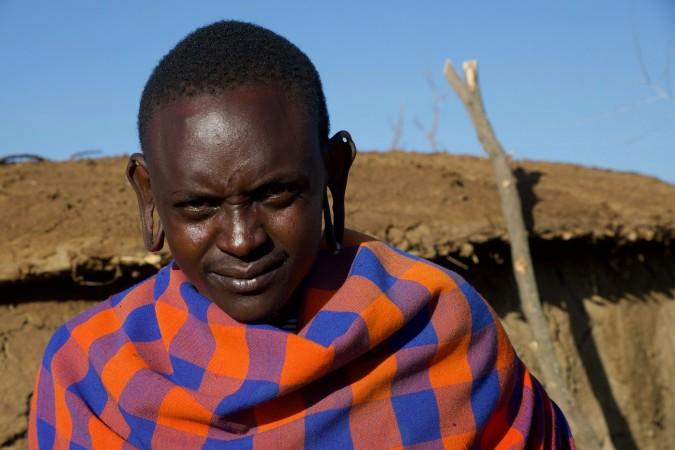
Overview of Arusha
History & Cultural Influence
Arusha was first settled in the 1830s by the agro-pastoral Arusha Maasai from Arusha Chini south of Mount Kilimanjaro. They traded goods like grains, honey, beer and tobacco with the pastoral Kisongo Maasai in exchange for livestock and dairy products. The city was conquered by the Germans in 1896 and was taken by the British in 1916 during World War I. Arusha is a multicultural city with a majority Tanzanian population of mixed indigenous African, Arab-Tanzanian and Indian-Tanzanian backgrounds.
Interaction with The Locals
Arusha is home to around 700,000 people from a variety of ethnic groupings, including the Maasai, Meru, Chaga, and other indigenous populations. The people of Arusha are well-known for their warm friendliness and strong cultural traditions. Most citizens speak Swahili as the national language, while English is also widely used, especially in business and tourism. The local economy thrives on agriculture, tourism, and small-scale trade, with many locals actively involved in the city's bustling markets and cultural activities.
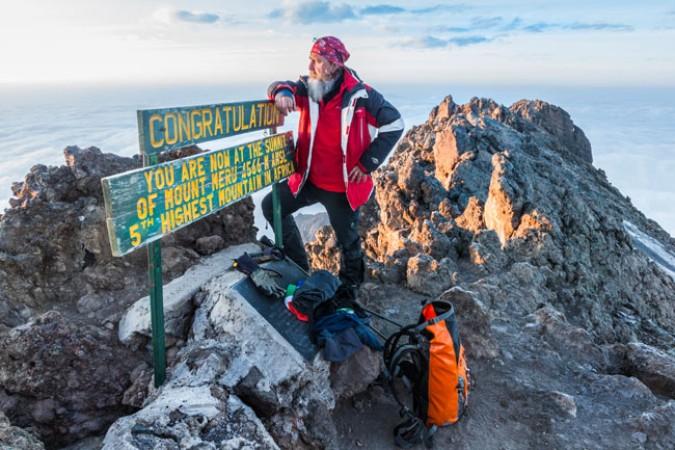
Mount Meru - © Tarangire National Park
Top Attractions in Arusha
Arusha National Park
Arusha National Park is a gem of biodiversity, showcasing the stunning landscapes of Mount Meru, Ngurdoto Crater, and the picturesque Momella Lakes. Whether you're up for a canoeing adventure on the lakes, a game drive through the park, or a guided nature walk, you'll have plenty of chances to spot wildlife like elephants, zebras, buffaloes, and even elusive leopards. It’s also a bird watcher’s paradise with over 400 species to admire.
Arusha Declaration Museum
For those fascinated by history, the Arusha Declaration Museum offers a compelling dive into Tanzania's political past. The museum focuses on the 1967 Arusha Declaration, a landmark moment when President Julius Nyerere set the course for Tanzania’s socialist vision. Exhibits detail the country’s struggle for independence, making this a must-visit for anyone interested in the country’s heritage and political evolution.
Chemka Hot Springs (Kikuletwa Hot Springs)
Nestled in the midst of lush greenery, Chemka Hot Springs is a tranquil retreat with crystal-clear turquoise waters perfect for a refreshing swim. The serene surroundings make it an ideal spot for relaxation and picnics, and the warm, mineral-rich waters provide a soothing escape. Whether you're looking for a peaceful day in nature or a quick getaway from the city, Chemka Hot Springs offers a refreshing break.
Mount Meru
Towering above the landscape, Mount Meru is Tanzania’s second-highest peak after Kilimanjaro. This challenging trek, which takes 3-4 days, is not only about the climb but also the incredible wildlife you’ll encounter along the way. Even on the first day, hikers can spot buffaloes, giraffes, and colobus monkeys. The trek rewards adventurers with breathtaking views, especially at sunrise, making it a must-do for nature lovers and hiking enthusiasts.
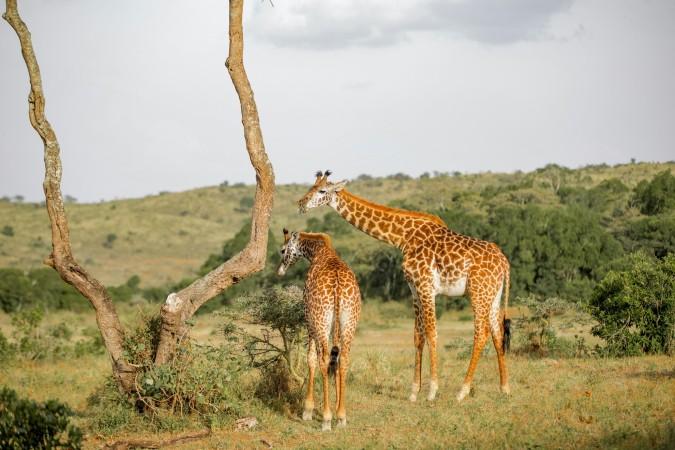
Arusha National Park - © Moses Londo
Must-Try Dishes in Arusha
When visiting Arusha, don't miss the aromatic Pilau or the comforting Wali Maharagwe that showcase the region's agricultural bounty. These dishes provide a delicious introduction to Arusha's rich culinary traditions.
- Nyama Choma: Translated to "grilled meat," this is one of the most beloved dishes in Tanzania, particularly in Arusha. The marinated goat or beef, the meat is expertly grilled over an open flame, giving it a smoky, flavorful finish. It’s typically served with ugali (a maize-based porridge) and kachumbari, a fresh tomato and onion salad.
- Ugali: Ugali is the foundation of many Tanzanian meals. Made from maize flour and water, it has a dense, dough-like texture that pairs perfectly with a variety of meats, vegetables, and sauces.
- Pilau: Fragrant and packed with flavor, pilau is a rice dish that’s spiced with cumin, cardamom, cloves, and more. Influenced by Swahili cuisine, it’s commonly prepared with beef or chicken and often mixed with vegetables and served during celebrations.
- Wali Maharagwe: Wali Maharagwe, or rice with beans, is a hearty and nourishing dish that’s frequently cooked with coconut milk and spices. Often served with a side of meat or vegetables, it provides a well-balanced and delicious meal that’s both comforting and flavorful.
- Samaki: Samaki, meaning "fish," is a favorite dish in Tanzania. The fish is seasoned and fried to crispy perfection, often accompanied by a spicy sauce and served with ugali or rice. It’s a dish that reflects the importance of fishing in Tanzanian culture, especially around Lake Victoria, where fresh fish is abundant.v
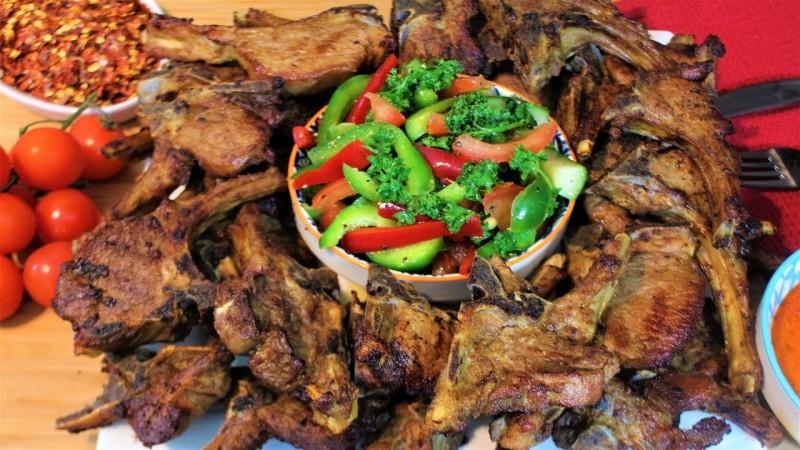
Nyama Choma - © shop africa usa
Festivals & Local Celebrations
Karibu Travel and Tourism Fair
The Karibu Travel and Tourism Fair, held annually in Arusha, is one of East Africa’s most significant events for showcasing the region’s tourism and cultural offerings. At the fair, you can explore a wide range of traditional Tanzanian items, including crafts, wines, precious stones, and safari gear. Enjoy cultural performances, connect with local artisans, and discover the diverse tourism opportunities in Tanzania. This event is also a key networking platform for industry professionals, promoting sustainable tourism practices.
Wanyambo Festival
The Wanyambo Festival is a vibrant celebration of the rich cultural heritage of Tanzania’s various ethnic groups, particularly those from the northern regions. Immerse yourself in the lively atmosphere of August with traditional music, dance, and food, as you experience the colorful attire and local delicacies that highlight Tanzanian identity.
Kilimanjaro Marathon
Held in nearby Moshi in February, the Kilimanjaro Marathon is more than just a sporting event—it’s a celebration of fitness and community spirit. Attracting participants from around the world, including locals from Arusha, the marathon offers a festive atmosphere with music, food stalls, and cultural displays, making it an exciting event whether you’re running or spectating.
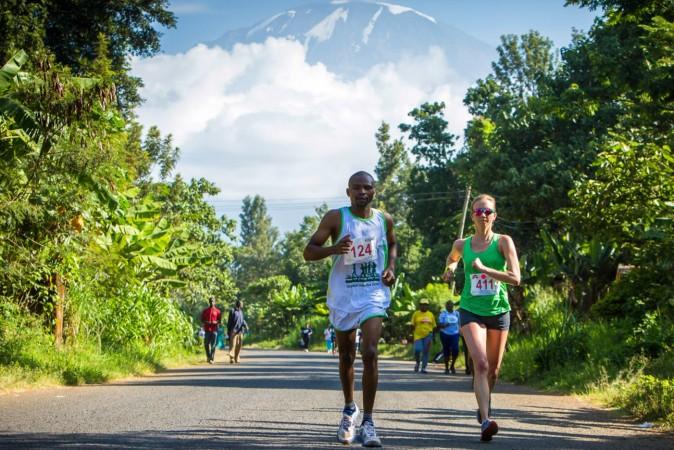
Kilimanjaro Marathon - © Kilimanjaro National Park
What to Do in Arusha
- Safari Excursions: One of the main reasons travelers flock to Arusha is to embark on unforgettable safari experiences. You can access the world-renowned Serengeti National Park and Ngorongoro Crater for game drives, where you’ll have the chance to spot the Big Five (lion, elephant, buffalo, leopard, and rhino). For those seeking a closer adventure, Arusha National Park offers shorter, yet equally captivating wildlife tours, including the chance to hike Mount Meru and witness spectacular views of Mount Kilimanjaro.
- Hiking and Trekking: If you're into hiking, Arusha offers various trekking trails. You can conquer Mount Meru, the fifth-highest peak in Africa, or begin your expedition to Mount Kilimanjaro, the tallest in Africa, from nearby starting points. Both provide a mix of lush forests, wildlife sightings, and stunning vistas, making them popular among outdoor enthusiasts.
- Coffee Tours: Arusha is surrounded by coffee plantations, making it a perfect place for coffee lovers. You can tour local farms, learn about the coffee production process, and enjoy a fresh cup of Tanzanian coffee straight from the source.
- Walking Tours: Explore Arusha city on foot with guided walking tours that take you through markets, historic sites, and local parks. You can visit landmarks such as the Arusha Clock Tower or unwind in the peaceful surroundings of Lake Duluti.
Shopping in Arusha
- Arusha Local Markets: For an authentic shopping experience, head to Central Market, where you can find everything from fresh produce to vibrant Maasai blankets, jewelry, and handcrafted items. The market is bustling and lively, making it a great place to experience the daily life of Arusha’s residents.
- Maasai Handicraft Stores: One of the highlights of shopping in Arusha is the opportunity to purchase Maasai handicrafts. From intricate beaded jewelry to traditional shukas (colorful clothes worn by Maasai people), these items are not only beautiful but also representative of Tanzania's rich cultural heritage.
- Tanzanite Gemstone Stores: Tanzanite, a rare gemstone found only in Tanzania, is a must-buy for those looking for a special souvenir. You can find authentic Tanzanite jewelry at the Cultural Heritage Centre and other reputable shops in the city.
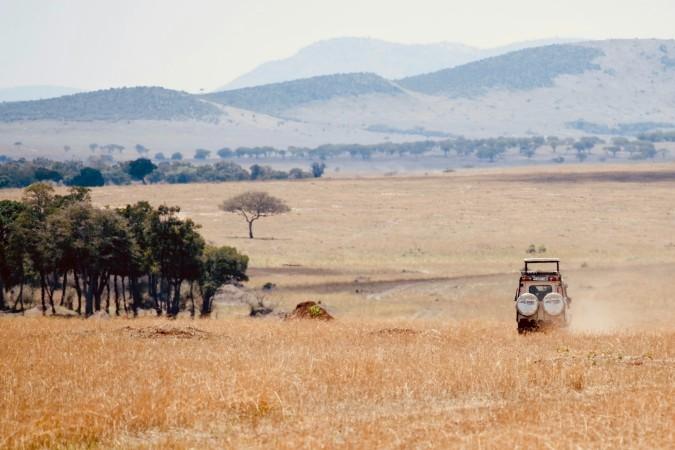
Safari Excursions in Serengeti National Park - © ray rui
Weather in Arusha: Best Time to Visit
Arusha, Tanzania, enjoys a subtropical highland climate with distinct wet and dry seasons, thanks to its elevation of about 1,400 meters (4,600 feet). Despite its proximity to the equator, the city experiences moderate temperatures year-round.
Average Temperatures
Throughout the year, Arusha’s temperatures vary:
- January to March: Expect daytime highs between 27°C and 29°C (81°F to 84°F), with cooler nights around 10°C to 11°C (50°F to 52°F).
- April to May: As temperatures begin to cool, highs range from 22°C to 25°C (72°F to 77°F), with nighttime lows of 11°C to 13°C (52°F to 55°F). April is the wettest month.
- June to August: This is the coolest period, with average highs of 20°C to 22°C (68°F to 72°F) and lows dipping to 8°C to 10°C (46°F to 50°F), with July typically being the coldest month.
- September to December: Temperatures rise again, with highs reaching 26°C to 29°C (79°F to 84°F) and lows from 10°C to 13°C (50°F to 55°F).
Best Time to Travel
The ideal time to visit Arusha is during the dry seasons, particularly from June to September and January to February. These months offer pleasant weather, perfect for outdoor activities like safaris and hiking. If you’re traveling during June to August, be prepared for cooler evenings and early mornings.
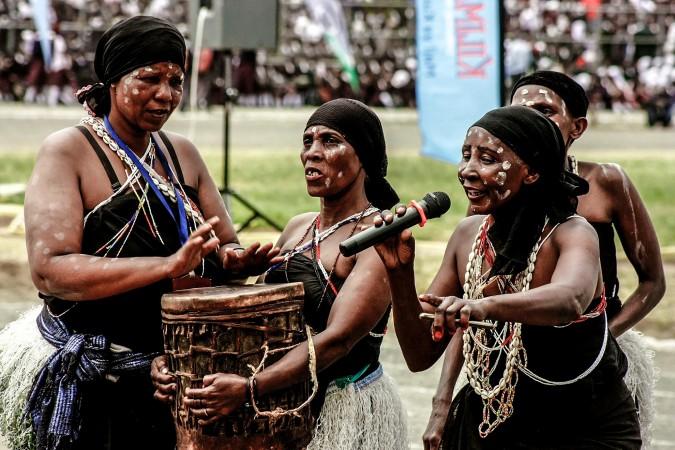
Explore Tanzania's culture with the locals - © fine shot
Essential Travel Information
Getting Around Arusha
- Arusha Airport (ARK): Arusha Airport is the primary airport serving the city, mainly handling domestic flights. The best ways to get from the airport to the city include:
- Dala-Dalas: These are shared minibuses that operate on set routes throughout the city and to nearby areas. They are a cost-effective way to travel but can be crowded and may not adhere to strict schedules.
- Buses: Larger buses connect Arusha with other major cities and tourist destinations. They are generally more comfortable than dala-dalas but may require advance booking during peak travel seasons.
- Taxis: Metered taxis are available throughout Arusha, but it's advisable to agree on a fare before starting your journey, as many taxis do not use meters.
ATM and Banking Services
ATMs are conveniently located at the airport and throughout Arusha, especially in shopping centers, allowing easy access for travelers. Most ATMs accept cards with Visa or Mastercard logos and have a withdrawal limit of Tzs 400,000 per transaction. Currency exchange is now limited to local banks and post offices, following recent regulations that closed exchange bureaus in the city, though currency can still be exchanged at the airport. Banking services are generally available from Monday to Friday, with limited hours on Saturdays, while some banks offer 24-hour services for added convenience.
Where to Stay in Arusha
- Luxury Lodges and Resorts: These accommodations often feature spacious rooms with private terraces, stunning views of Mount Meru, and personalized services such as spa treatments, fine dining, and guided safari tours.
- Mid-Range Hotels: If you’re looking for comfort without the extravagance, mid-range hotels in Arusha offer excellent services at a reasonable price. These hotels often include amenities like on-site restaurants, swimming pools, and shuttle services to nearby attractions.
- Budget Guesthouses: For travelers on a tight budget, Arusha also has several guesthouses and hostels that provide simple, clean accommodations at an affordable price. Despite the lower cost, many guesthouses offer a warm, welcoming environment with communal areas.
- Safari Camps: For an immersive wildlife experience, safari lodges and camps around Arusha are a unique option. These lodges offer a blend of rustic charm and modern comfort, often situated within or near national parks. Staying at a safari lodge or camp allows you to wake up to the sounds of nature, enjoy guided game drives, and experience Tanzania’s incredible wildlife right at your doorstep.
Des articles pour vous
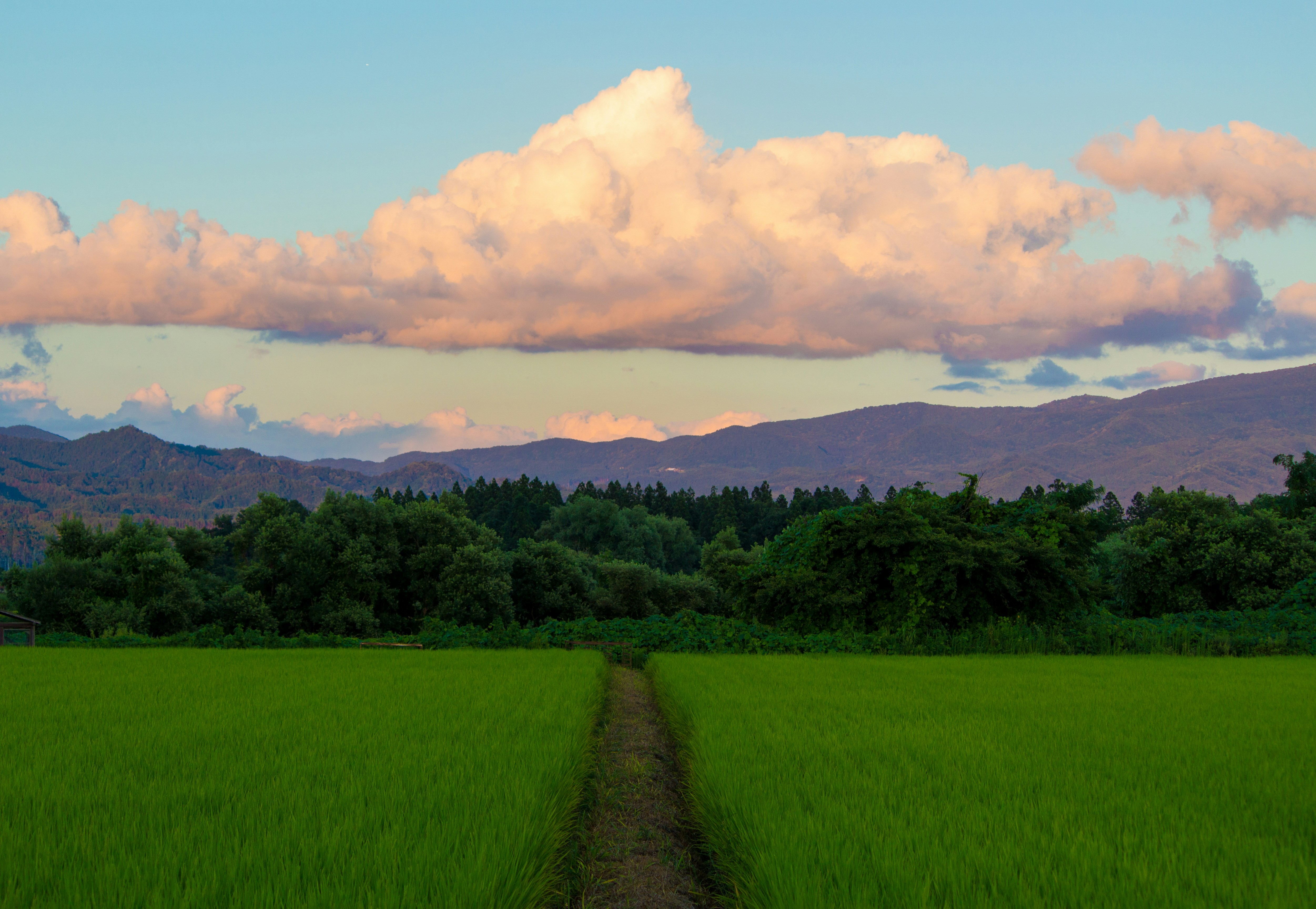
Explore Fukushima - Japan Travel, Asia
Nestled in Japan's scenic Tohoku region, Fukushima offers travelers a unique blend of historical charm, cultural richness, and natural beauty. Known for its stunning landscapes and welcoming communities, Fukushima is an excellent destination for those seeking an authentic Japanese experience beyond the bustling metropolises. Renowned for its diverse attractions, from ancient castles and hot springs to vibrant festivals and picturesque countryside, Fukushima offers a great opportunity for cultural and historical exploration for anyone who loves Japanese culture.
Population: Approximately 1.8 million in 2023.
Economy: Specializing in the seafood and fishing industries, Fukushima, with its historical impacts, now continues to thrive as one of the most developed and largest economies in Japan.
Landmarks: Famous for Aizu-Wakamatsu Castle, Fukushima City Historical Museum, and Ouchi-juku.

La symphonie saisonnière de l'Inde : Révéler les meilleurs moments pour explorer le sous-continent
Les traditions anciennes dansent avec les merveilles modernes dans une terre où les épices et l'encens embaument l'air, et chaque recoin cache une histoire prête à être découverte. L'Inde, vaste et diverse, se déploie comme un monde miniature en soi. Mais quand devriez-vous entreprendre ce voyage épique ? Rejoignez-nous pour un tourbillon à travers la tapisserie saisonnière de l'Inde et trouvez le moment parfait pour votre aventure.

Voyage culinaire à travers la Chine : Savourez les saveurs diversifiées
Des rives subtropicales de Canton aux steppes balayées par le vent du Xinjiang, le vaste paysage de la Chine est une tapisserie de saveurs, chaque région mettant en avant ses propres trésors culinaires. Avec plus de 2000 miles séparant les palais de dim sum du sud des étals de kebabs du nord-ouest, et des woks crépitants entre les deux, la diversité gastronomique de la Chine est véritablement inégalée. Alors, prenez vos baguettes et embarquez pour une aventure gourmande à travers les plats les plus délicieux du Royaume du Milieu !

Vivez l'expérience à bord du RV Indochine II - Une croisière sur le Mékong
Le RV Indochine II est un navire de croisière fluviale de luxe, offrant un voyage inoubliable à travers de nombreuses attractions le long du fleuve Mékong. Construit en 2017, ce vaisseau haut de gamme allie élégance coloniale et commodités modernes pour créer un environnement à la fois confortable et élégant pour son équipage et ses passagers. La taille intime du navire en fait le choix idéal pour ceux qui recherchent une expérience de croisière plus personnelle tout en explorant la culture, les paysages et le patrimoine riches du Vietnam et du Cambodge. Que vous admiriez le paysage depuis votre balcon privé ou que vous dégustiez une cuisine locale authentique, le RV Indochine II promet une aventure exotique hors du commun.

Assistez à la pêche sur pilotis au Sri Lanka
Le Sri Lanka, réputé pour ses plages magnifiques et son riche patrimoine culturel, abrite une tradition unique qui captive les voyageurs depuis des siècles : la pêche sur pilotis. Cette pratique ancienne, transmise de génération en génération au sein des communautés côtières, allie art et nécessité, offrant un aperçu d'un mode de vie intimement lié aux rythmes côtiers de l'île. La pêche sur pilotis au Sri Lanka n'est pas simplement un moyen de capturer des poissons ; c'est un emblème culturel, incarnant la résilience et l'ingéniosité des communautés de pêcheurs sri-lankaises.

À l'assaut des sommets : guide du randonneur de l'Himalaya
Lorsque les premiers rayons du soleil teintent les sommets enneigés de doré et de rose, vous êtes au seuil de l'aventure. Bienvenue dans l'Himalaya, où chaque pas est une immersion dans le plus grand spectacle de la nature. Avec Tweet World Travel comme guide, préparez-vous à un trek d’aventures, qui éveillera vos sens et vous transformera à jamais.
